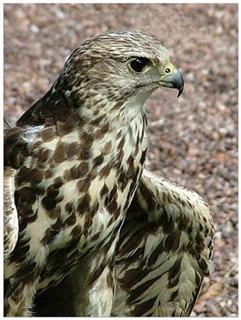Falcon - Saker
Scientific Name: Falco cherrug
Sun, 27th April, 2025 - 8:37 am GMT
Sponsor Ads:

Alternative Name
Scientific Name: Falco cherrugBasic Info
Saker Falcons are about 18 inches in length, and are brownish in color. They have two dark brown stripes running down either side of their beaks, which are known as moustachial stripes! Generally, Saker Falcons have pale heads. Their light colored crowns have black and rufous edged feathers, and the rest of the body is covered in darker shades of browns, buffs, and tans. On their undersides, the colors are lighter browns, tans, and whites. Saker Falcons are commonly confused with some other falcons, such as the Peregrine. The Saker is larger than the Peregrine and is also larger than the Lanner.
Health
In April and May they will tend to migrate, but may be flown earlier in the year. This falcon has a strong migratory instinct. If it is to be used in falconry telemetry is strongly recommended. Breeding Saker Falcons usually build their nests on rocks. Generally the nest contains between two and three chicks that the parents will defend fiercely.Habitat
N/ABehavior
An extremely lovely bird and a talented hunter, the Saker Falcon is sadly disappearing from the wild. Falconers have valued these birds for years because of their intelligent, bold natures and beautiful appearances! Generally, Saker Falcons are found over plains, forested steppes, or more arid desert areas. Saker Falcons are confidant and determined hunters, and have been known to prey upon animals larger than they are! They are strong and can fly for long distances, diving at around 150 miles per hour and soaring up to 1,000 feet! They hunt in much the same manner as a Goshawk, ambushing prey from a perch. In April and May they will tend to migrate, but may be flown earlier in the year. Saker Falcons may be used for ground quarry or aerial quarry, and are usually quite easy to train with dummy bunnies or swing lures. They are such avid hunters that they will actually dive into undergrowth or brush in pursuit of prey! Saker Falcons may be flown in conjunction with other falcons to achieve certain hunting accomplishments or strategies.Origin
Europe and AsiaHistory
The Saker Falcon is native to much of Southeast Europe, and its range extends into Asia Minor. Although they may be a bit difficult to handle, the Saker Falcon is the favorite of many falconers. These birds have become quite scarce in the wild. Their habitats and prey have been largely destroyed by pollution, young birds have been taken in excessive numbers for use with falconers, and Saker Falcons have even been shot. In Europe it is now illegal in most places for falcons to be taken from the wild. To obtain a Saker Falcon in Europe one must get a captive born Saker.Common Foods
Mostly, they take small mammals like rats and stoats, and birds like pigeons or partridges.Sponsor Ads:
We are inclined to believe those whom we do not know because they have never deceived us. -- Unknown
Falcon - Saker
Coded by: BGID® | ALL RIGHTS RESERVED Copyright © 2000-2025
Disclaimer | Privacy | Report Errors / Contact | Credits


 Preparing For China. China is growing their military. China Military Technology - can it keep up with the US?
Preparing For China. China is growing their military. China Military Technology - can it keep up with the US?  versus
versus 

 versus
versus 
 This Thread is about the North Korean Military itself - the kind of army, navy, and air force they have.
This Thread is about the North Korean Military itself - the kind of army, navy, and air force they have. 
 versus
versus 
 versus
versus  versus
versus